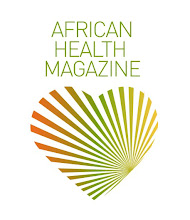
Cosmetic surgery procedures are on the rise amongst Nigerians living in Nigeria and in the diaspora. Women are not alone when it comes to surgical enhancements, Men seek such procedures too although they are more common among women. With the advent of plastic surgery, more and more females are going under the knife to get drop dead gorgeous looks and whats more surprising is younger girls follow this trend too. There are a number of side effects of plastic surgery, even in the hands of a qualified professional. Just incase you are considering having one here are some side effects. Hopefully when you are done reading this you just might change your mind.
Reaction to Anesthesia: One of the side effects of plastic surgery is a negative reaction to anesthesia.Some individuals may take longer time waking up than expected while individuals with pre-existing conditions could have severe reactions on vital organs like the heart leading to death.
Infection:Individuals who undergo plastic surgery open themselves up to the possibility of getting infections because of unsanitary conditions in the operating room to contaminations after the procedure.Some infections slow down the healing process, others have been known to cause death
Sutures: Sutures if not closed properly can loosen and cause massive bleeding (internally and externally) and in worst case scenario, haemorrhages. In addition to causing bleeding, loose sutures need to be re-stitched which would need another surgery, possibly with permanent scars in the end.
Nerve Damage: Another side effect of plastic surgery is nerve damage or loss of feeling in the area of the body the procedure was performed on.
Fluid Buildup: medically referred to as seroma, occur in areas of the body where tissue has been removed. This condition usually disappears after a month. If it goes beyond that point, patients need to go back to their doctors.
Blood Clots: Are side effects on plastic surgery in which blood collects localized areas of the body. Doctors can drain the blood from these areas. Blood clots that occur in sensitive areas like the brain require dramatic treatments that could be dangerous and life-threatening. A major concern about these clots is how fast they break up and dissolve into the blood.There have been cases when undissolved blood clots have dislodged from the wounds and traveled to other parts of the body, causing serious harm in the form of heart attacks, strokes and brain damage.
Pain: A common side effect of plastic surgery is pain in the incision area, especially in procedures like breast implants and face lifts. These procedures require a lot of stretching of the skin.
Vomiting and Nausea: Definitely not so much of a concern when compared to other bigger issues, nausea and vomiting are very common after effects of cosmetic surgeries and can not be taken lightly, especially if you have a weak immune system.Most of the time an individual who has undergone cosmetic surgery feels nauseous due to the effect of the anesthesia that was administered during the procedure. This can be thwarted though if the individual opts for localized anesthesia that does not cause the same side effects as general anesthesia
photo credit : Getty Images




























